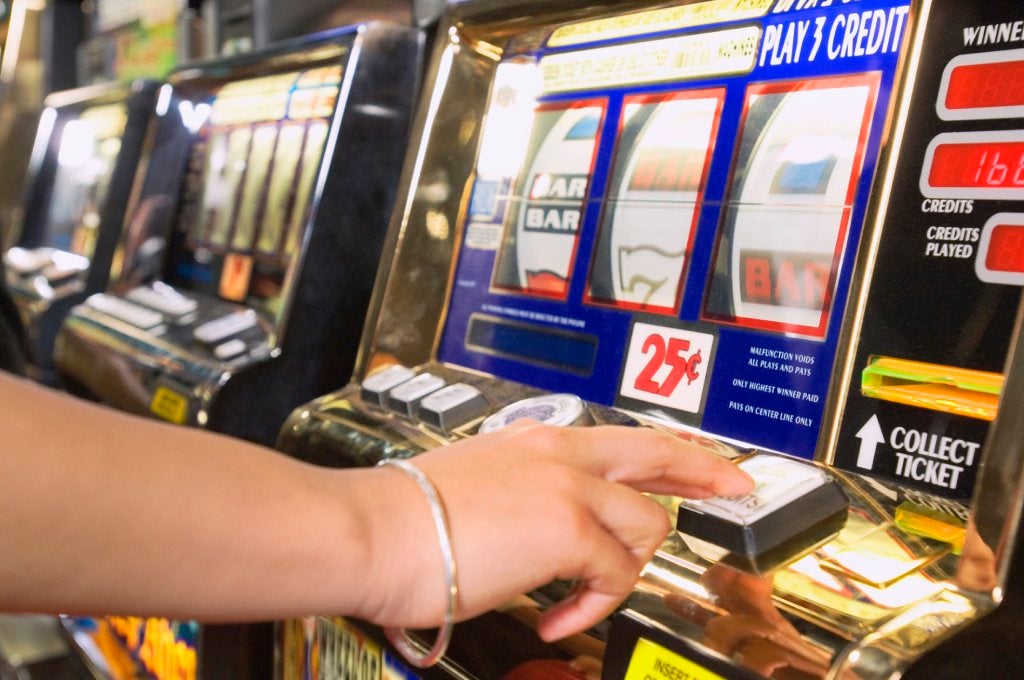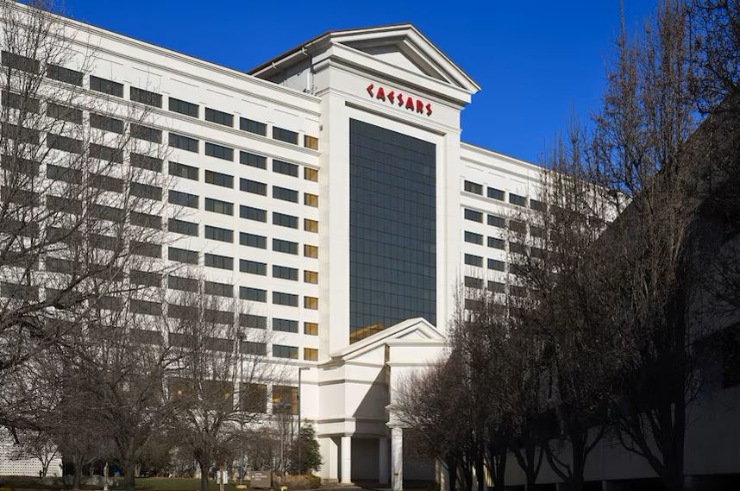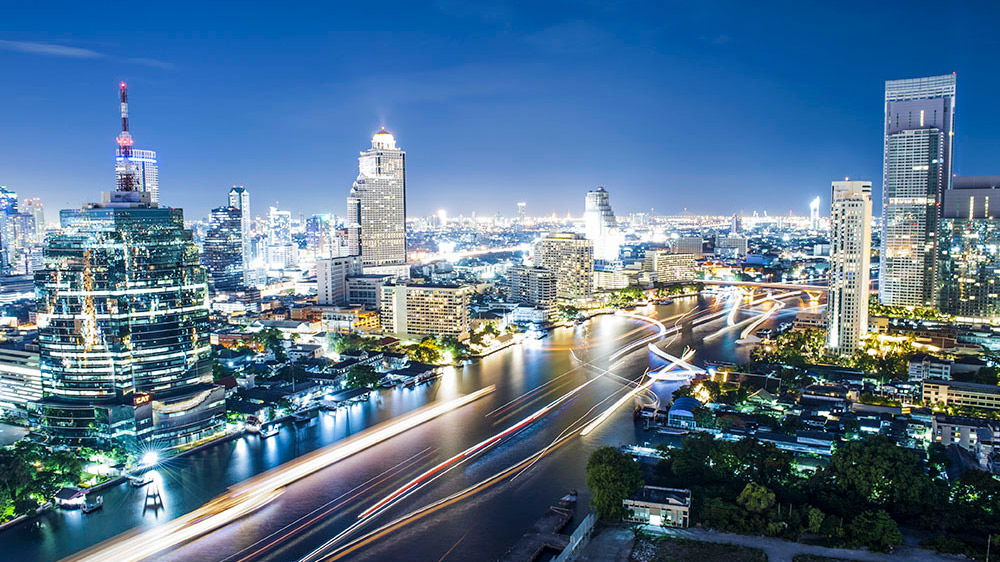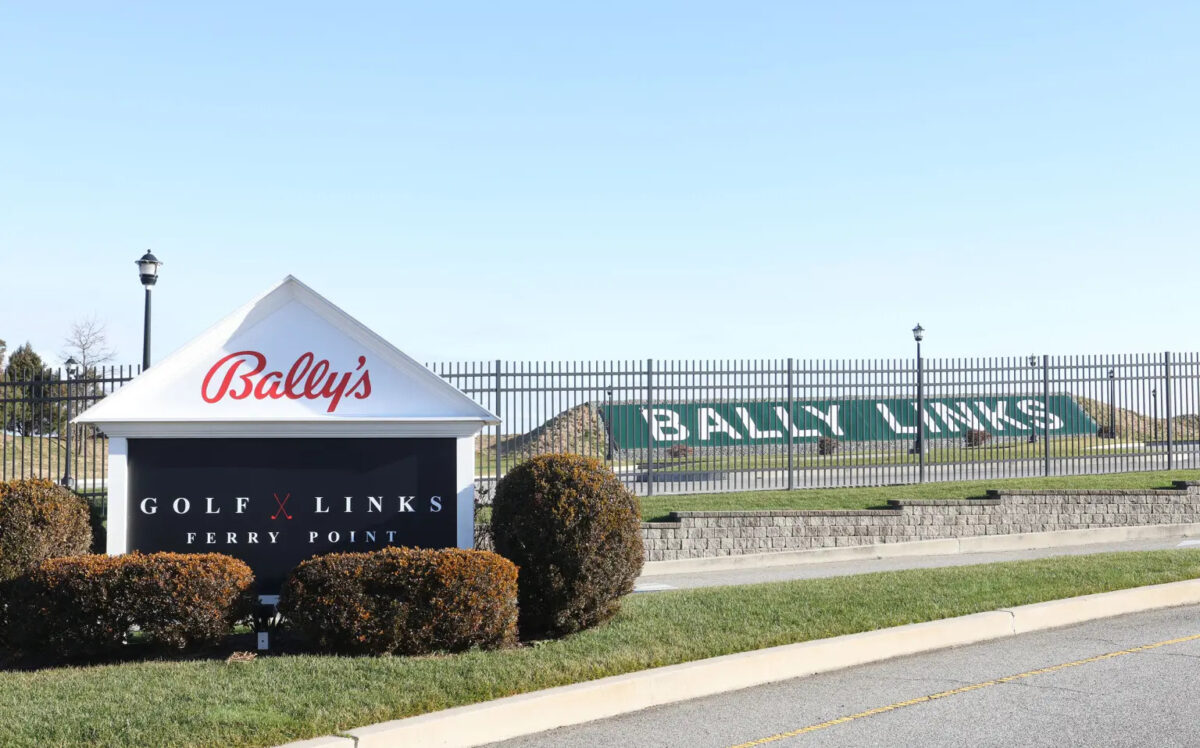Inside a Coney Island theater devoted to circus sideshows, a crowd watched as longtime sword swallower and strongman Adam Rinn presided over a mock funeral, complete with weeping mourners and an open casket carried by pallbearers.
The deceased, Rinn told onlookers on the cold February afternoon, was not an actual human but rather “our beloved Mermaid Parade,” should a proposed casino and entertainment complex known as The Coney be built on site.
“We hope that this is not going to be the reality,” Rinn said, adding for effect, “Mourners, please be seated.”
Rinn is the artistic director at Coney Island USA, a nonprofit group that operates the Coney Island Circus Sideshow and the hugely popular Mermaid Parade, which draws hundreds of thousands of tourists every year. However, he said if the casino is greenlit, Coney Island USA and its programming “will likely cease to exist.”
Adam Rinn, longtime sword swallower and circus strongman, is artistic director of the nonprofit Coney Island USA.
Arun Venugopal/Gothamist
The Coney Island casino proposal, which is being developed by a consortium that includes Thor Equities, Legends, Saratoga Casino Holdings and Global Gaming Solutions, a commercial arm of the Chickasaw Nation, is one of 11 vying for a downstate gaming license as part of a protracted approval process expected to conclude by year’s end.
The proposal embodies a familiar standoff in and around New York City. On one side are local residents and merchants who say they fear the irreplaceable loss of community; on the other side are neighbors and developers who argue that the area desperately needs the jobs development would bring, and that Coney Island cannot subsist on carnival rides, kitsch and memories of better times.
Layout of the proposed The Coney, a casino and entertainment project vying for approval. The venture would change the landscape of the iconic Brooklyn spot.
Courtesy of The Coney
Perhaps what makes the fight different in this seaside community are the creative professionals enlisted to push back against the well-financed project proponents with slickly produced videos and theatrical events. Online and in person, they appeal to a deep well of Coney Island nostalgia, captured in countless songs (Lou Reed, Taylor Swift) and movies, most recently the multiple-Oscar winning film “Anora.”
But the project’s supporters are quick to remind residents that star power doesn’t put food on the table for struggling families — especially in Coney Island, where family incomes lag behind much of Brooklyn.
“Many recognize that this is Brooklyn’s moment to build a borough-defining development,” Robert Cornegy, a former member of the City Council from Brooklyn who now serves as a consultant and spokesperson for the project, said in a statement to Gothamist.
Defending ‘the people’s playground’
Among those opposing the project is Marissa Solomon, a local resident whose family has lived in the neighborhood for generations. Her great-grandmother, she said, once sold candy apples on the nearby boardwalk.
She shared a black-and-white photo, circa 1947, that she said showed her uncle, grandmother and great-grandmother standing in front of the Parachute Jump, a ride that ceased operations decades ago but continues to loom over the beach and boardwalk. At the front of the group was a little boy with his face buried in an ice cream cone – her father.
“This is where the first amusement park opened,” said Solomon. On a recent afternoon, she gave a quick tour of the Coney Island Museum, where she serves as a guide on Sundays. Through the windows of the second-floor museum you could spot The Cyclone, a rollercoaster that continues to operate 98 years after it was built.
Marissa Solomon in the makeup room of Coney Island USA.
Arun Venugopal/Gothamist
Coney Island’s legacy on the American fun-industrial complex was profound, she said. Walt Disney World, Six Flags Great Adventure, Las Vegas – all of them were modeled in different ways after Coney Island, Solomon said.
Much of that history was now at risk, Solomon said. She held up a photo pulled from city planning documents. It showed that the building that houses the museum and Coney Island USA, a structure dating to 1917, would be all but swallowed up by the proposed development.
Additionally, the 360-degree views that riders of the Wonder Wheel have enjoyed since it was built in 1920 would be lost with the construction of new buildings, including a 402-foot tower just north of the ride.
Solomon said it was the locals who invariably suffered from gaming, pointing to Atlantic City, which hasn’t had a supermarket in decades.
A view of Coney Island from the beach, Wonder Wheel looming in the background.
Arun Venugopal/Gothamist
“There are a million casinos in a million places,” Solomon said. “There’s only one Coney Island.”
She and other opponents contend they are in the majority, and point to a petition expressing “very strong disapproval and opposition to the construction of a Casino in Coney Island.” So far, she said, it had garnered nearly 8,400 signatures.
Among the signatories is Martine Emile, a filmmaker who said she lived “literally across the street” from the site of the project. Emile worries that if the casino were to become a reality her 14-year-old son would be confronted by alcoholics, “or someone’s crying because they lost all their life savings.”
During her own childhood, she said the amusement park had provided “fond memories.”
Martine Emile, filmmaker and Coney Island resident.
Arun Venugopal/Gothamist
“Go to the roller-coaster, grab some hot dogs, some cotton candy, hang out on the beach. Not a lot of people could do that,” Emile said.
“It is basically the people’s playground.”
A promise of jobs for a struggling area
Some local officials have sided with opponents of the project.
Community Board 13 voted against The Coney application in January, a vote that is part of the city’s Uniform Land Use Review Procedure but merely advisory.
However, at a public hearing held by the City Planning Commission on March 19, many people who spoke up said the neighborhood desperately needed the work: a promised 4,500 construction jobs and another 4,000 permanent gaming and hospitality jobs.
Manhattan-based Thor Equities, the project developer, and other backers have seized on this sentiment.
A slow day on Coney Island.
Arun Venugopal/Gothamist
“When we talk to locals, we hear over and over again that Coney Island needs jobs and that it needs more to do on a year-round basis,” Cornegy said. “The Coney delivers on both fronts.”
The 1.3 million-square-foot project would include a hotel, convention center and gaming facility as well a hotel, convention center and retail space. It would also feature a 20,000-square-foot food hall featuring local vendors, more than 100,000 square feet of “open rooftop space” and 1,500 parking spaces.
Proponents argue that it would help economically uplift a struggling part of the city.
The median household income in the area of Brighton Beach and Coney Island is $42,000, according to the U.S. Census Bureau, well below the boroughwide average of $69,000.
A postcard from Coney Island.
Arun Venugopal/Gothamist
For some locals, the promise of jobs is appealing.
“ We’re talking about poverty stricken areas,” said Derick Latif Scott, an outreach worker who said he works with “high-risk individuals” in the neighborhood, during the public hearing. “These youngsters and adults alike, they need jobs.”
Kenneth Martinez, a longtime resident of the area, surveyed the neighborhood from outside of a bodega. The nearby beach and boardwalk were sparsely populated. Martinez said for much of the year, the area was nowhere near as vibrant as it had once been.
“ It was like nonstop people, anytime,” Martinez said. “It could be 3 o’clock in the morning, [with] people out. Now it’s deserted. It’s a ghostland.”
“ I think the casino will bring it back up,” he said.
Kenneth Martinez, a longtime resident of Coney Island.
Arun Venugopal/Gothamist
The project’s backers say the benefits of The Coney will extend beyond jobs. In his statement, Cornegy said, “we will be establishing a $200 million locally led trust that is designed to support the projects and causes people in Coney Island care about.”
If the project moves forward, Cornegy said it would also result in private security, lighting and additional security cameras designed to make the area safer.
“The Coney is a project that is poised to uplift the entire community,” said Cornegy.
Marie Mirville-Shahzada, a resident of Bay Ridge and executive director of Alfadila Community Services, a nonprofit that serves disabled children and adults and provides meals to seniors, supports The Coney. She said emotions around the project ran high and that she’d been harassed by people deeply opposed to it.
She said her husband runs a convenience store at West 17th Street and Mermaid Avenue, a few blocks from where The Coney would be located. Many business owners she’d spoken to in the area, she said, struggled outside of the summer months.
“Coney Island is an area that economically needs to be revamped,” she said. And for young people who were looking for a foothold in the job market, she said The Coney presented possibilities beyond the casino, for hotel workers and people seeking a career in hotel management.
“They’re providing training. Some people in the community might need that extra training or may not be able to access training to get some of the jobs. They’re helping with that.”
City planning commissioners are set to vote on the Coney Island project later this spring, after which it will be reviewed by the city council. Proposals to the state’s Gaming Facility Location Board, which oversees the casino siting process, are due in June. The board is expected to award three downstate licenses by the end of 2025.
Home to the freaks, and a stage for stars
Coney Island’s allure has become deeply embedded in popular culture, most recently in the movie “Anora,” whose titular character is a sex worker. The film took home Oscars this year for Best Film and Best Actress, among other accolades.
“Beautiful movie,” said Rinn, the artistic director of Coney Island USA. “ You see our building (in the film) in all its glory.”
Rinn grew up in the area and vaguely understood its cultural importance even as a child, watching as the neighborhood was captured in films over the years. These include “Annie Hall,” “Requiem for a Dream,” “The Wiz” and “The Warriors.”
“You really get a feeling of like, ‘This is important, I don’t know why, yet I know that it’s cool.’”
A view into the amusement park at Coney Island.
Arun Venugopal/Gothamist
Rinn said he became “enamored” by the sideshow acts in his youth. Eventually, he signed up for classes at Coney Island USA’s Sideshow School, whose offerings include The Basics of Fire Eating, Human Blockhead and Bed of Nails. He recalled the early days of Sword Swallowing.
“ It’s a lot of retching and a lot of gagging,” he recalled. “But eventually, like anything else, you convince yourself that you can do it.”
He said the spirit of Coney Island was rooted in its embrace of anyone, regardless of their quirks or background. This is what he worries is now at risk.
“It really was and always will be home to the outsiders, to the freaks, the people that don’t necessarily fit in anywhere,” he said. “And that is something that both this neighborhood and the city can’t afford to lose.”





